Plongée is the French word for diving, and it was prevalent on signs all over the South Pacific islands. OK, so we didn’t actually dive all day, but it was a fun phrase to say. We initially had our trip to French Polynesia booked for late February 2021. However, due to Brittany needing knee surgery for a ski injury and the islands temporarily closing due to Covid restrictions, we pushed our trip back to July. The island group is a French collectivity in the South Pacific Ocean, not close to any major landmass (unless you consider a 5-hour flight to meet those criteria). Most people are more familiar with the name of its largest island, Tahiti. French Polynesia is known for its remote islands and atolls with turquoise blue waters, posh resorts in Bora Bora, and (you guessed it) great diving.

At just under eight hours, the nonstop, overnight flight from Los Angeles to Papeete was relatively easy. It took nearly two hours to get to our baggage upon arrival due to the mandatory covid test being administered at the airport before being able to enter the country. We had a few more hours to kill before our connecting flight so we enjoyed some fresh baguette (one of the benefits of being in a French territory) and coffee. Air Tahiti operates flights on small prop planes all over French Polynesia, an area spanning nearly the size of Europe but with less than 300,000 inhabitants.
Our first stop, Rangiroa in the Tuamotu Archipelago, was a coral atoll – a small strip of land surrounded by a coral reef. On the interior was a lagoon formed when the former volcanic island sank. There are two main passes on the island where the waters of the lagoon are connected to the Pacific Ocean, and depending on the tides, the water rushes into or out of the lagoon. As is often the case, strong currents attract big pelagics which makes for great diving. All our diving would be done in the Tiputa Pass, but the site and attractions change with the tides, so there was no risk of monotony.
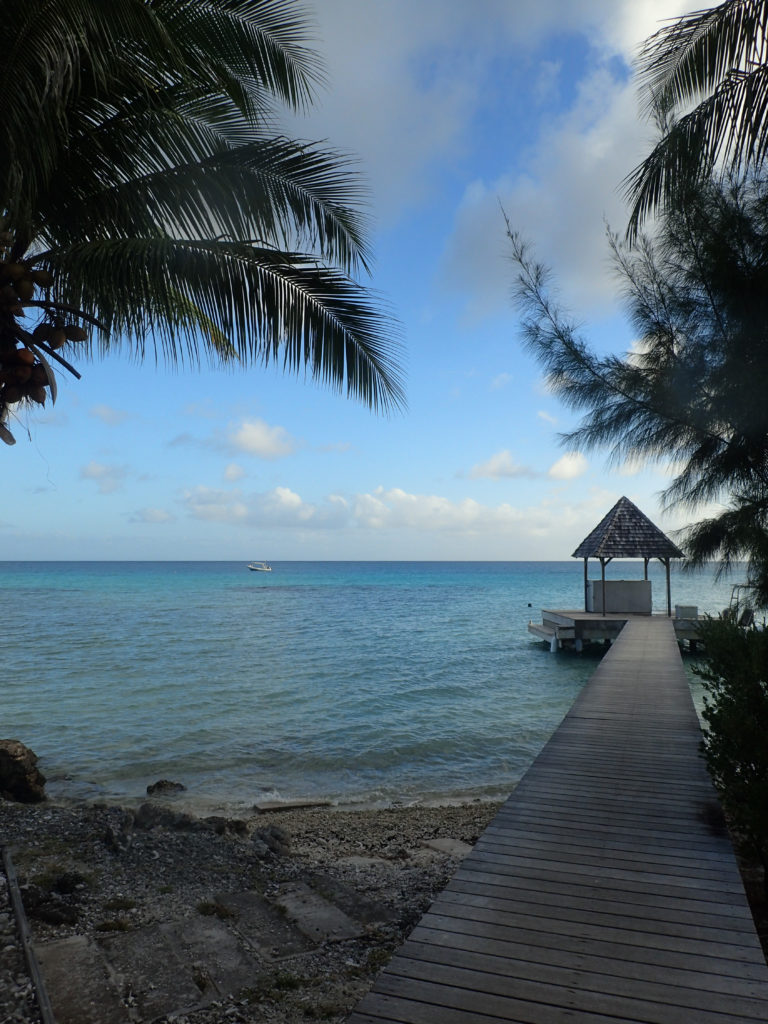
With strong winds and an outgoing current, the waves in the pass and on the ocean-facing side were several feet in height. The boat ride out to the entry point did not lack excitement. It felt good to dip below the surface into relative calmness compared with the choppy conditions at the surface. The first dive exceeded all expectations. Shortly after descending into the crystal-clear waters, we saw two manta rays gliding beneath us. While photographing a big school of barracuda, a blacktip reef shark approached. Then we were treated to one of the sightings for which Rangiroa is famous among divers, a pair of friendly dolphins. They came right up to us, played around us, and floated vertically in the water. Having previously only seen them from the surface or from afar under water, we were surprised by their size: twice our height and weighing up to 1000 lbs. The dolphins living in the area are identifiable by their marks, and it’s clear that they recognize the dive masters as well, who get special attention.


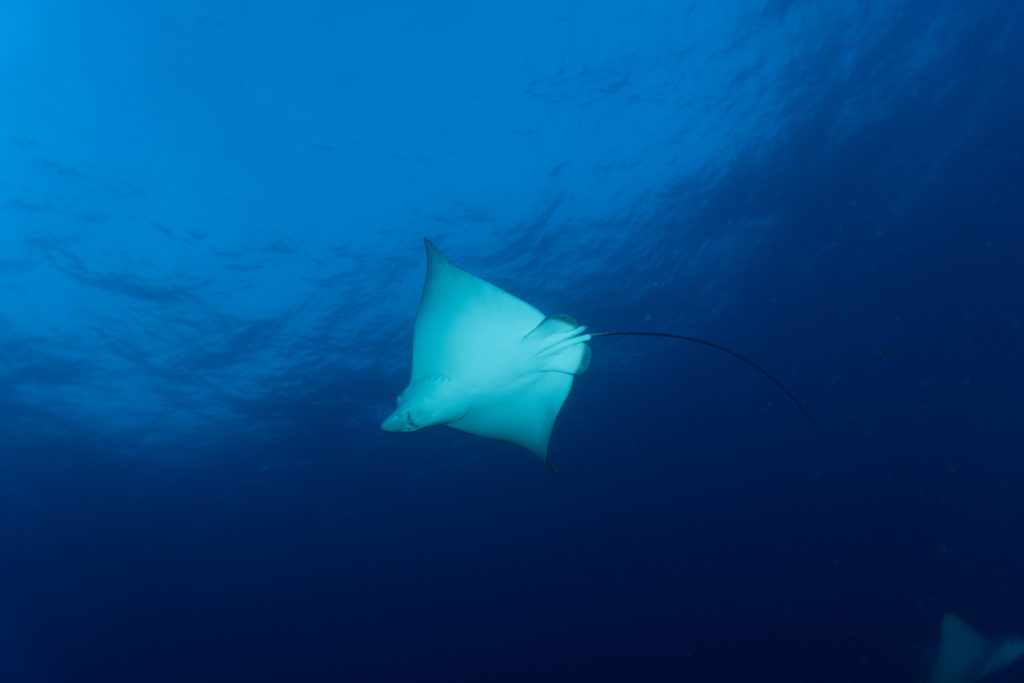
The second dive was during the incoming tide, so we would be drifting through the pass and ending our dive in the lagoon. Shortly after dropping down, we came across a school of eagle rays. After rounding a corner, we started to move into the channel and could feel the speed of the current picking up. We were cruising along at a good pace when the dive master signaled that we were coming up on one of two canyons and had to descend quickly after passing the edge, to not get swept away. We did so successfully and were treated to a big aggregation of blacktip reef sharks in the canyon, as well as a tiger shark slightly further away. We were excited to see what else the Tiputa Pass had in store for us after another impressive dive.
We took a lunch break after dive #2 and ventured into town. We found a restaurant situated directly on the pass, where people often gather to watch dolphins jumping in the waves when the tide is right. We enjoyed a delicious quiche and baguette sandwich with a side of baguette, before heading back to our hotel to relax a bit. Our third dive of the day was planned to start just before sunset. We stopped at the corner before the channel, clung on to some rocks to stay in place, and watched the show as several species of sharks and rays swam by. We also saw five dolphins on just this dive alone, which was one of our most memorable. On the way back through the pass in the boat, we had a prime view of the dolphins leaping several feet out of the water in the disturbingly large waves created by the outrushing current.

On one dive, Brittany decided to try her hand at the camera rig, which started surprisingly calm in the deep blue. Diving during incoming current, we once again went with the flow aiming for the canyons. The excitement started when the current picked up more than expected, and Brittany would have missed the canyon if it wasn’t for Nico pulling her down. The walls only provided a marginal reduction in the strength of the current, so we had to cling on to whatever we could for dear life to stay in place. This was particularly challenging for Brittany, who had to hold on to the big camera rig with one hand and the wall with the other, all at 75 feet depth and with a current that pushed our bubbles horizontally. This was the densest group of sharks we saw on the trip, but we don’t have a single picture to show for it. We were both happy to have the camera in one piece as Brittany managed to keep it from banging into the rocks. We completed several more dives, and even though they were all at the same site, each one was unique and exciting in its own way.
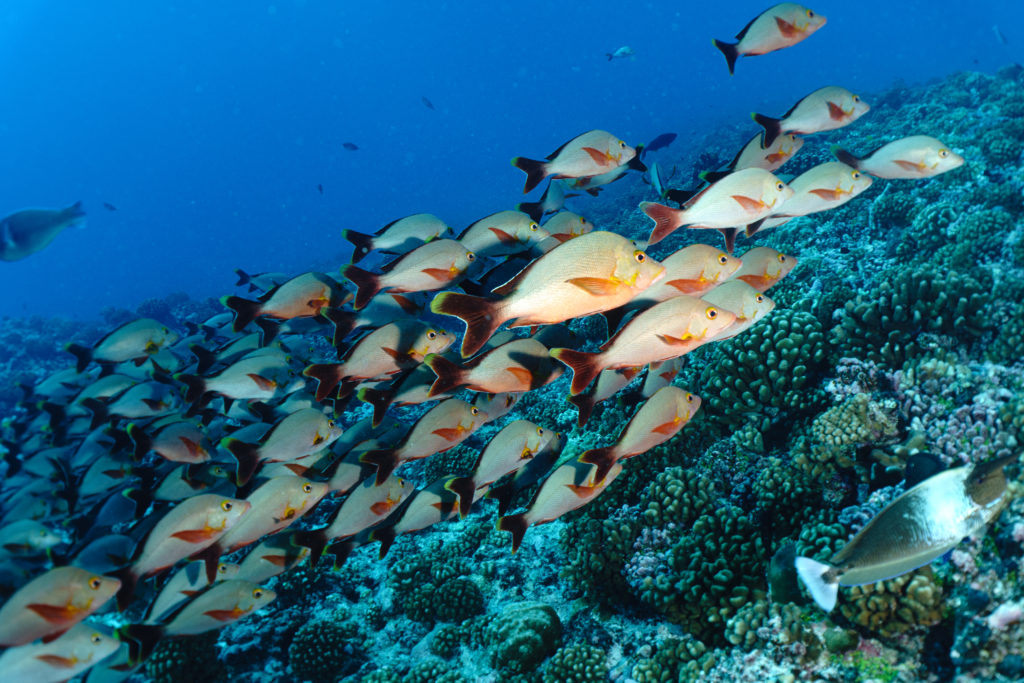
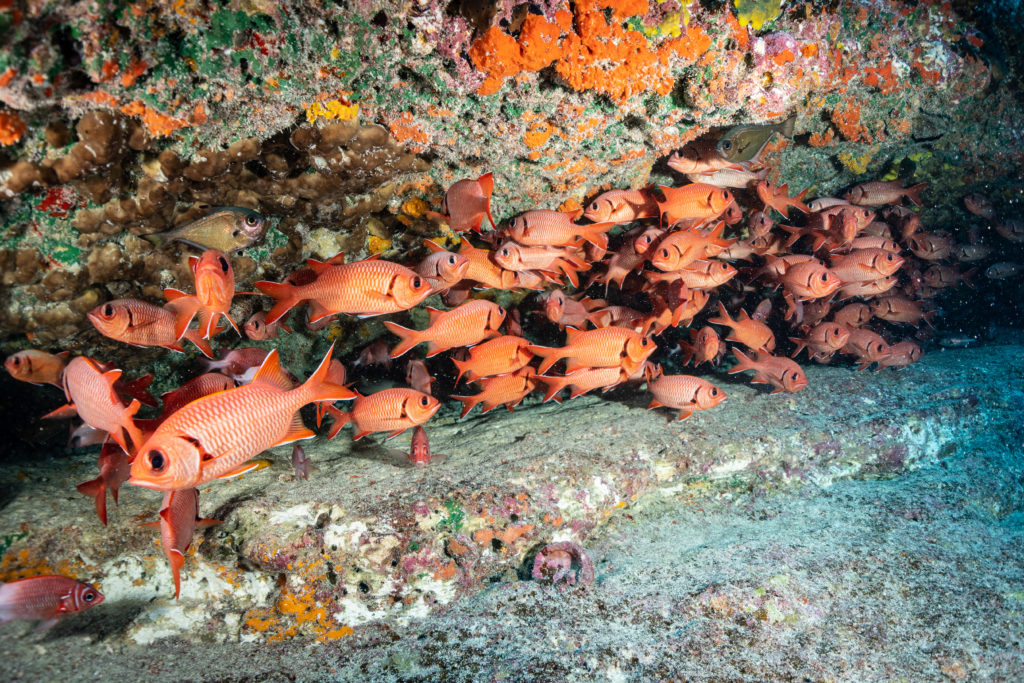
When not diving, we spent most of our time relaxing at the Hotel Kia Ora. Our villa had a little pool, so we alternated between laying in the sun and cooling off in the water. Breakfast and dinner were at a restaurant overlooking the lagoon, and we couldn’t get enough of the view. On our last day, unable to dive before our flight, we rented a kayak to explore the lagoon. We contemplated a trip to the Blue Lagoon on the other side of Rangiroa, but opted for relaxing over a full day excursion.


We took a flight back from Rangiroa to Papeete, Tahiti, for our next stop, Moorea. The island of Moorea looks very different from Rangiroa; though they are both volcanic islands, Moorea is much younger and still has most of its mountainous core. From Tahiti, the peaks of Moorea are visible across the 10 mile stretch of ocean. Ferries run regularly between Papeete and Moorea, and it’s an easy 45-minute ride. After a little confusion on where to pick up our luggage and a quick shuttle transfer, we arrived at the Sofitel Kia Ora to cross an item off Brittany’s bucket list – staying in an overwater bungalow.
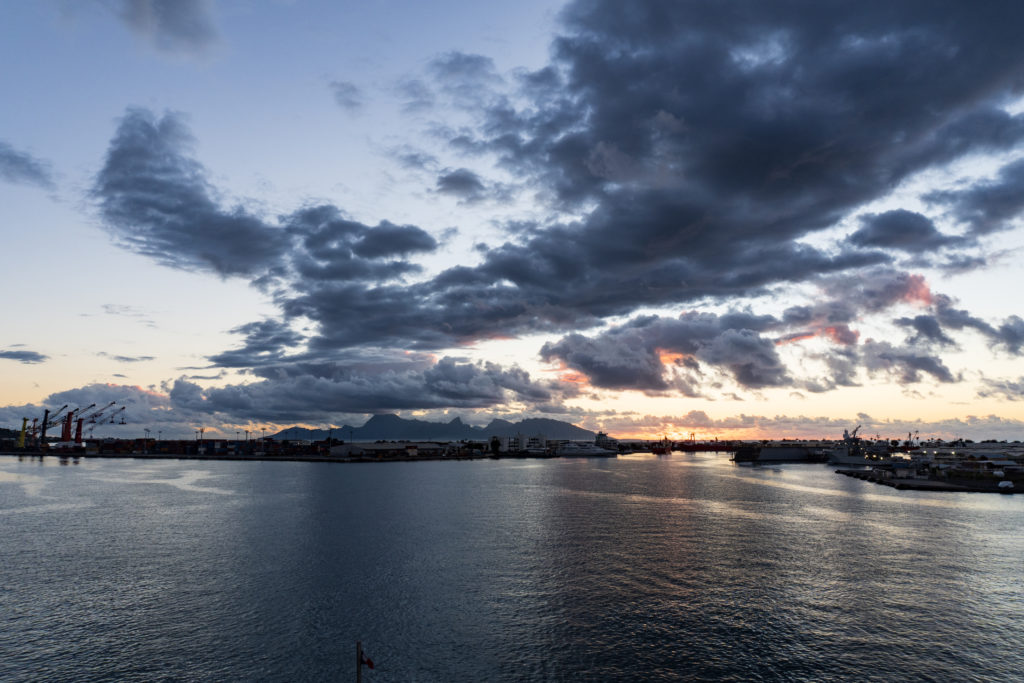
Moorea is surrounded entirely by a coral reef and lagoon. There are twelve passes in the coral ring which are formed through runoff from the mountains, because coral cannot grow in fresh water. Green mountainous peaks, creeks flowing down the canyons, light turquoise water in the shallow lagoon, and deeper blue water surrounding it make it one of the prettiest and most unique islands we’ve seen, and incredible place to stay in overwater bungalows. We were planning to do some more diving (surprise!), attempt to snorkel with humpbacks, and enjoy the resort and lagoon from our bungalow.
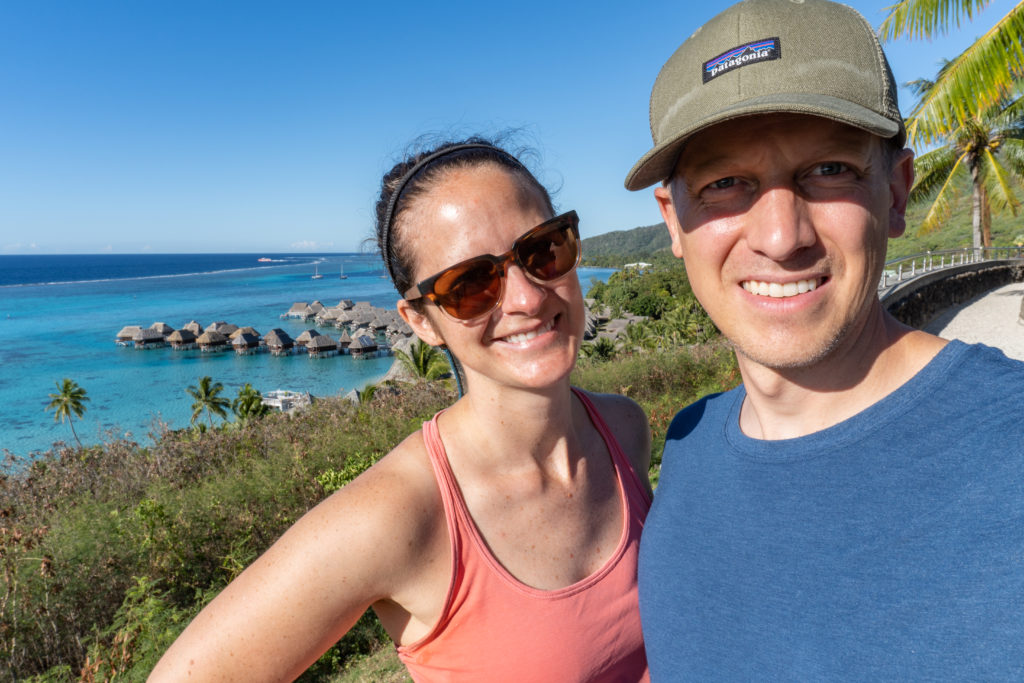
The Sofitel and its overwater bungalows are situated in the lagoon which made for easy snorkeling in the clear waters. We were able to jump into the lagoon directly from our bungalow to snorkel among clownfish, corals, triggerfish, puffers, other species of fish, and lots of sea cucumbers. The resort actively participates in coral reef restoration in the lagoon, so it’s easy to find patches of coral with lots of life. We even saw a stingray and a few baby blacktip sharks gliding along the sandy bottom. Brittany is known to not enjoy snorkeling, but even she was at ease in the lagoon. And when not snorkeling, the bungalow had a glass bottom in the floor to watch the action beneath the surface.
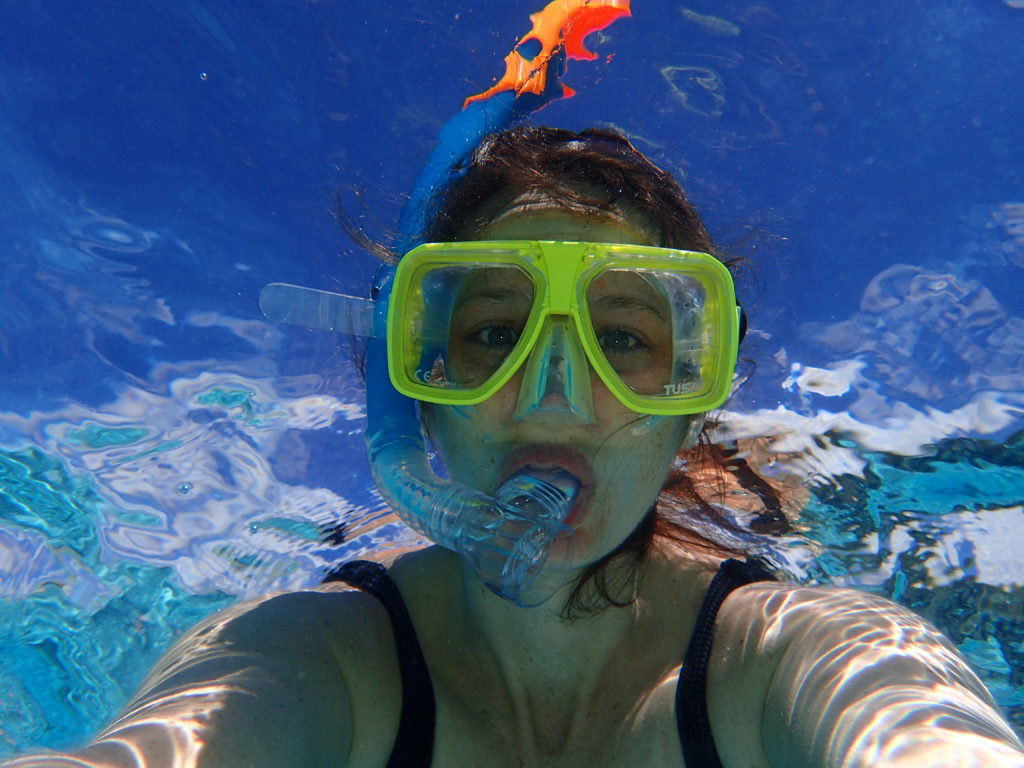
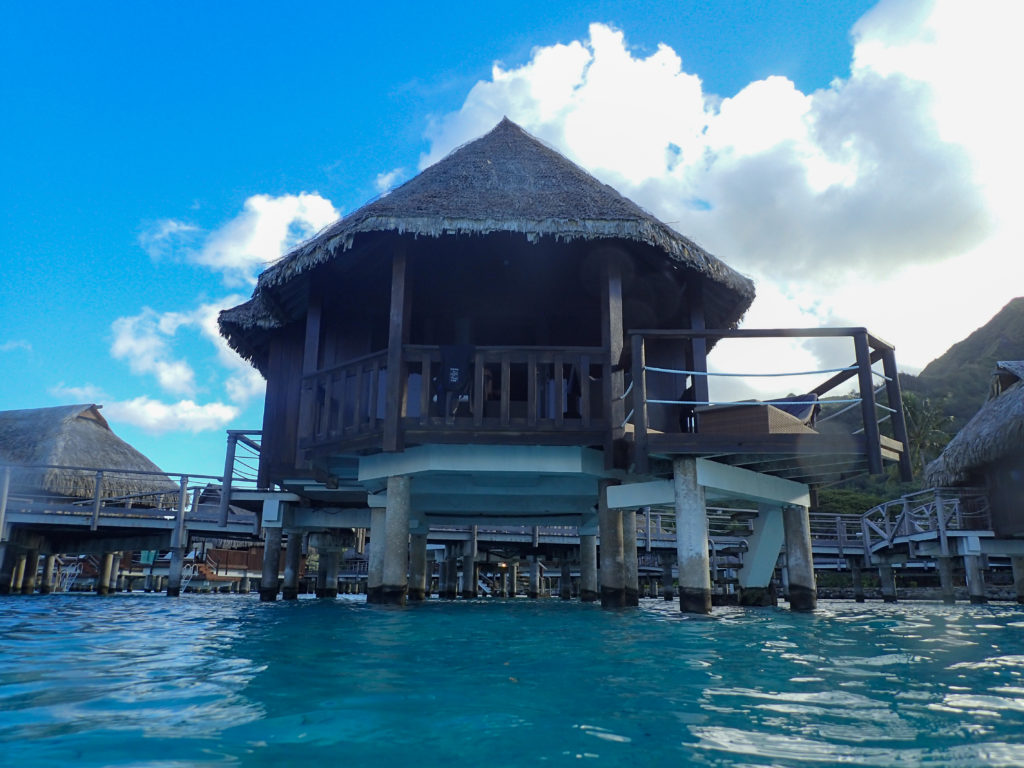

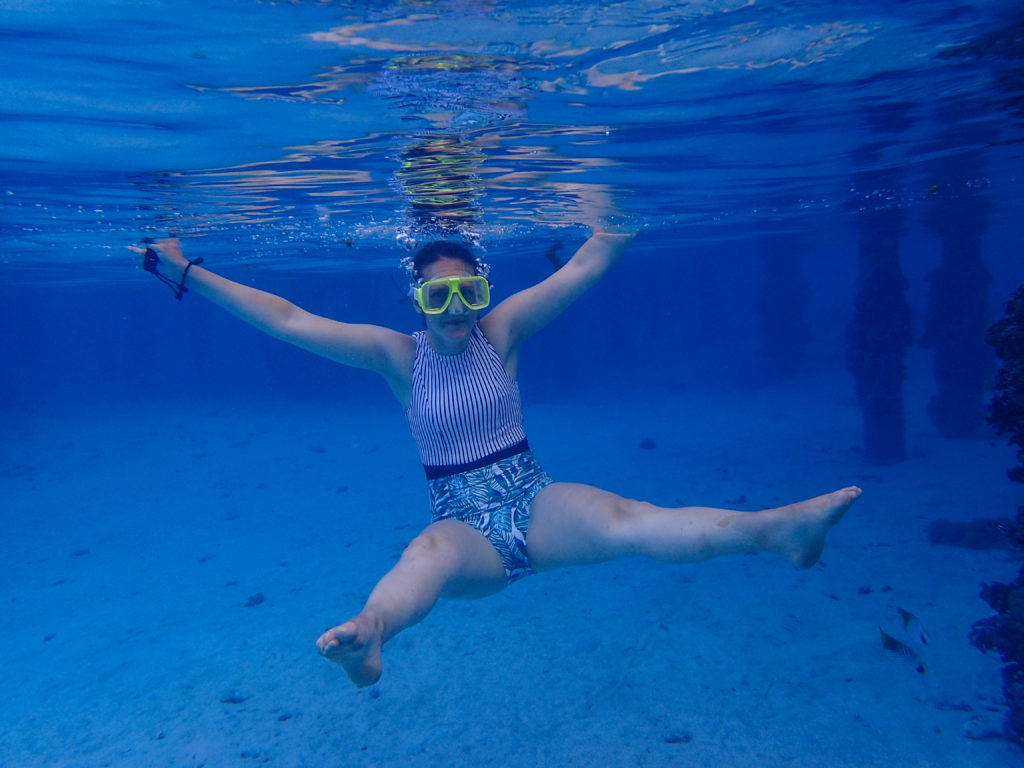
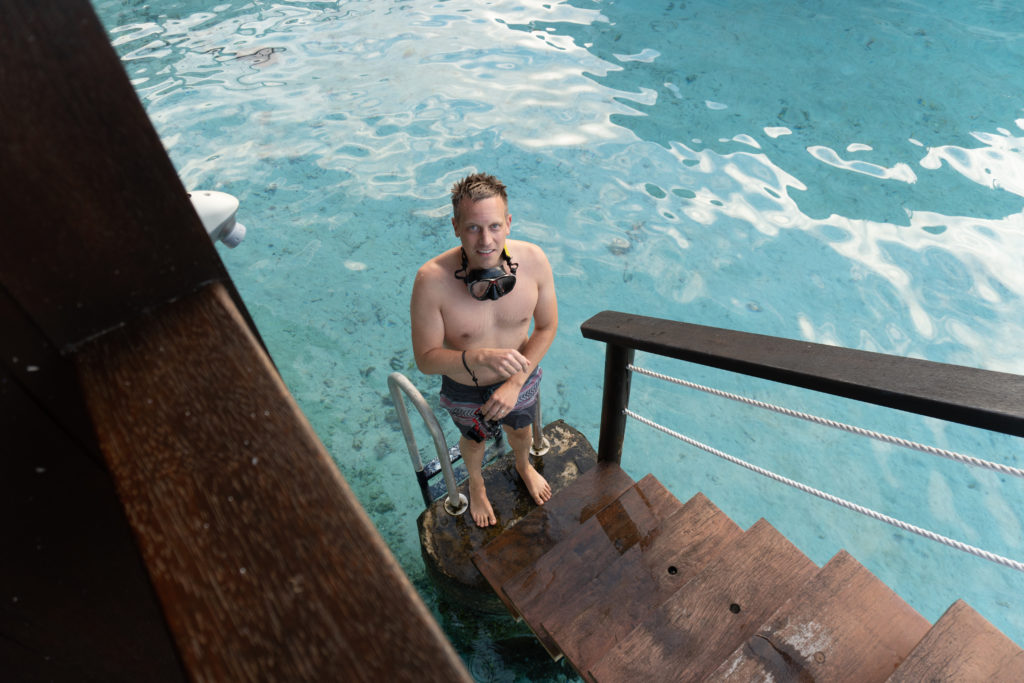
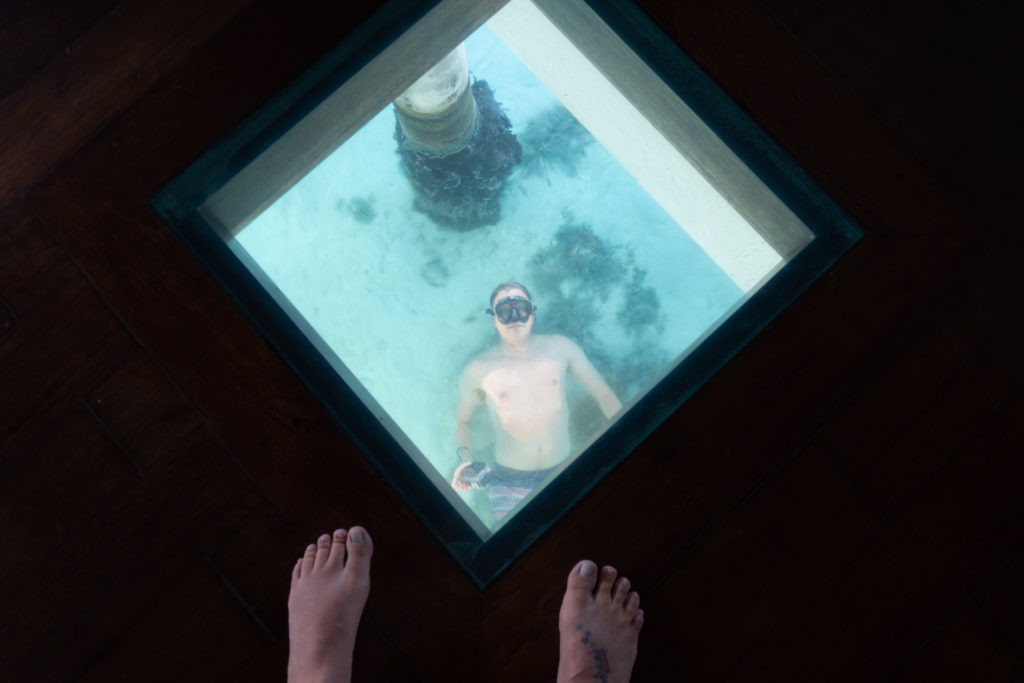
The best diving on Moorea is located on the northwest corner of the island, about 30-minutes from the Sofitel, so we got picked up around 7 for the winding drive there. Most dive sites are located just outside the reef in deeper waters. On our first dive at “Tiki”, we saw a collection of sharks among the coral gardens: a large lemon shark, black tip, nurse shark and a grey reef shark. There were also several green and hawksbill turtles that were peacefully sleeping among the coral. The next dive featured some turtles, both a hawksbill as well as the more common green, among healthy fields of hard coral that seemed to be limitless. It was nice a change from Rangiroa’s diving. With only two dives a day, we enjoyed being done mid-day so we could relax in the afternoon. One of our favorite ways to relax, was at the Sofitel’s secluded beach bar where we sipped rosé and ate caprese paninis while taking in the incredible views of the turquoise and deep royal blue waters leading back to Tahiti.

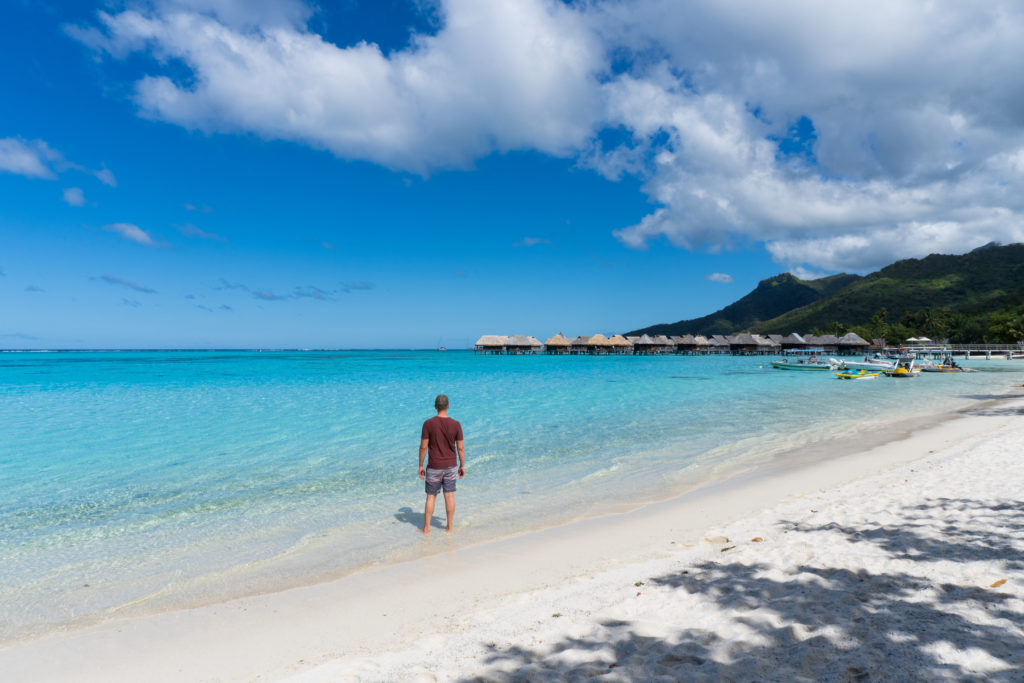
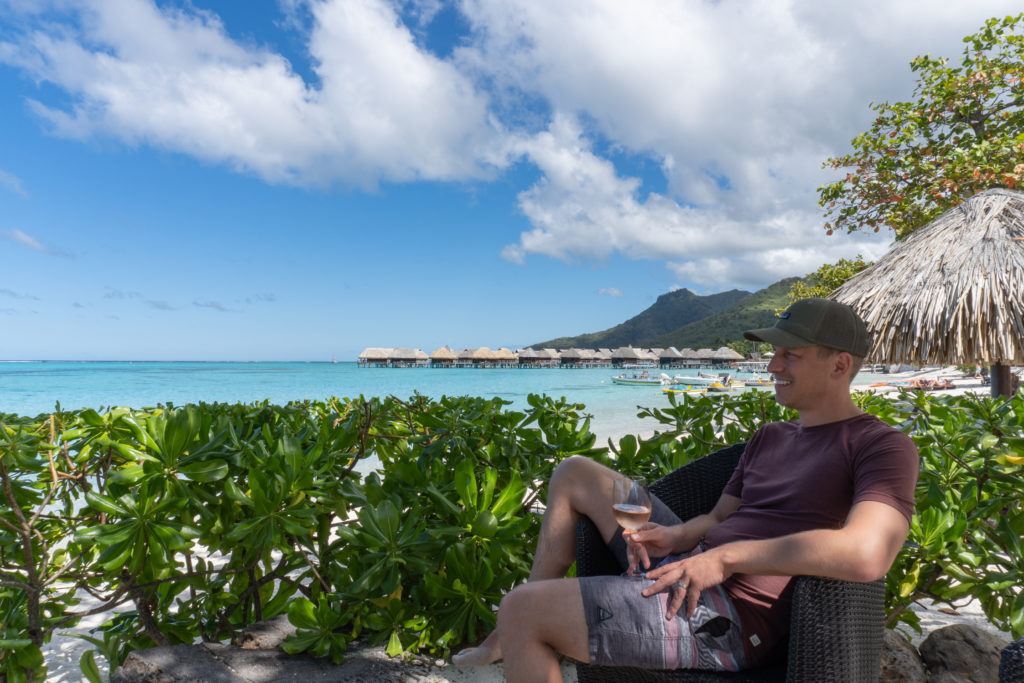
One unique experience in Moorea is being able to swim with humpback whales. These giants migrate from Antarctica to the tropical Pacific isles to mate and can be found there from late July through October. Our underwater photography shop in LA runs week-long trips for just this experience. We only planned to go for one day and were there at the very beginning of the season during which sightings are less regular. We got picked up in Opunohu Bay and were joined by four other guests plus a passionate guide, Joaquin. The plan was to spot whales from the boat, as they surface for air about every 7-11 minutes, and then jump in with snorkeling gear to get close. The boat must stay at least 300 feet away from the whales, so we needed to swim quickly towards the whales at a moment’s notice. Everyone needed to stay close together and avoid splashing since there can be oceanic whitetips in the deep blue. Hearing this was a bit unsettling, especially for Brittany who just recently overcame her snorkeling fear in the shallow, clear waters of the lagoon.
At Joaquin’s signal, we all slid quietly into the water, Brittany clinging to Nico’s arm, and tried to stay as close together as possible while not thinking about all that could be below us. Our first foray into the waters was unsuccessful with the whale surfacing several hundred feet from where we last saw her. We climbed back into the boat and searched the water for another spout of water or tailfin. On our second chance, we were able to get quite close to a female. She was right below us a few times, sleeping in a vertical position, and we were able to see her dive and return to the surface for several minutes. It was a memorable experience to be in the water with these gentle giants, and the deep blue water was quite peaceful after all.

We had one more day of diving on the agenda, taking advantage of our 20-dive package with Topdive which has dive sites across French Polynesia. First up was the Opunohu Coral Wall; we descended to about 100 ft surrounded by canyons of rose-shaped coral that is prevalent around the island. Nearby, we saw a large lemon shark swimming along gracefully. Ascending slowly, we saw almost a dozen turtles, many of them sleeping. Eagle rays also joined us, and we were circled by several inquisitive black tip reef sharks up to our safety stop. This ended up being our favorite dive in Moorea. On our final site, at Eden Park, we saw more turtles, moray eels, and spotted several shrimps with gobies, hairy crabs and spotted coral crabs. We were shooting with a wide angle lens the whole time, so alas we don’t have many pictures of these tiny critters.

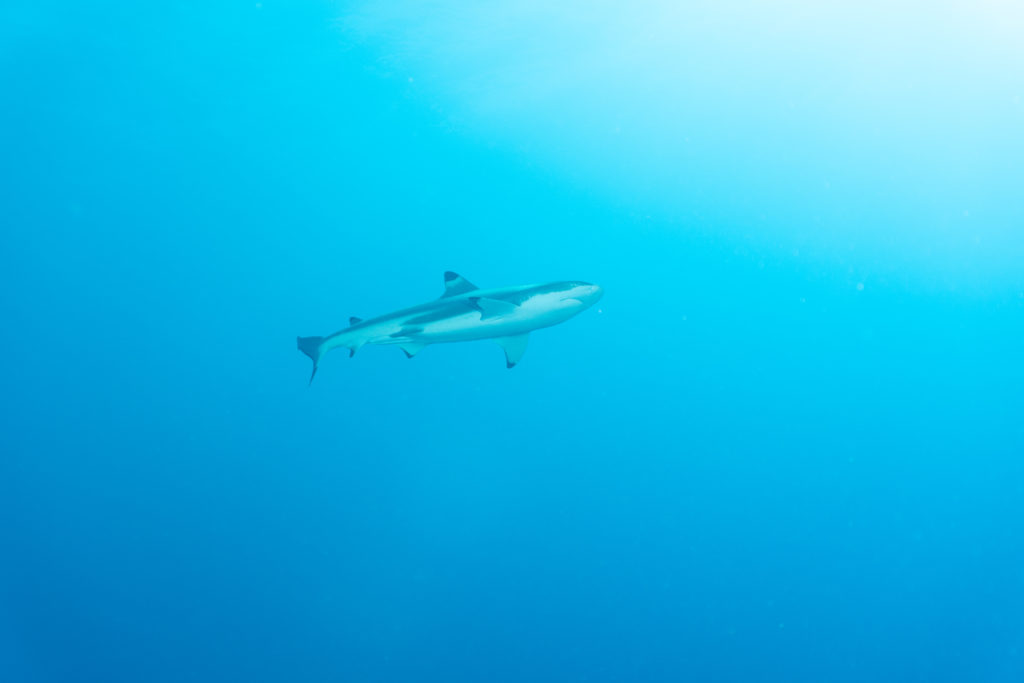

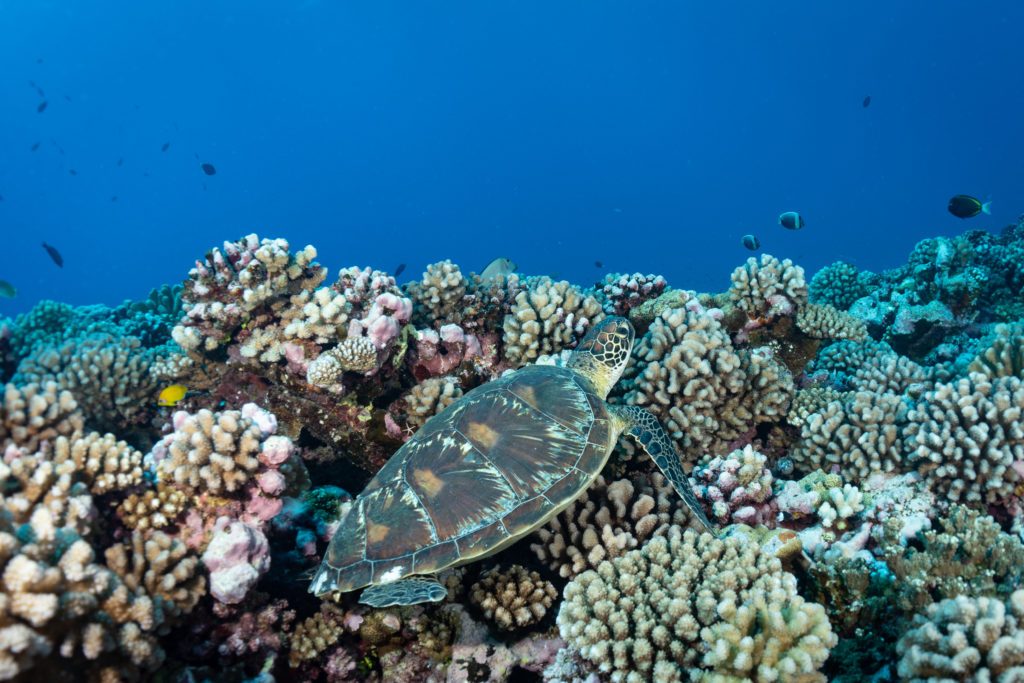
The objective for our last day on Moorea was to do a hike to the famous Belvedere point which overlooks the island. Unfortunately, our plan was foiled by the visit of French president Emmanuel Macron to the island, which resulted in the closure of most roads and a delay in getting picked up. Disappointed by a politician ruining yet another good thing, we chilled at our bungalow and took an earlier ferry back to Tahiti.
Our initial plan was to head directly to the airport from Moorea, but due to a flight change, we got an extra 1.5 days on the island of Tahiti. We headed to the Intercontinental which was beautifully situated with a view of Moorea and its own lagoon with a healthy reef habitat. Per recommendation, we decided to rent a car to explore the largest island. First up, we went into the town of Papeete to grab dinner at a food truck congregation along the waterfront. The choices varied from crepes / gallettes to Tahitian seafood to Chinese. We chose a savory gallette and sweet crepe combo at a truck that had plastic tables and checkered tablecloths and a decent crowd.
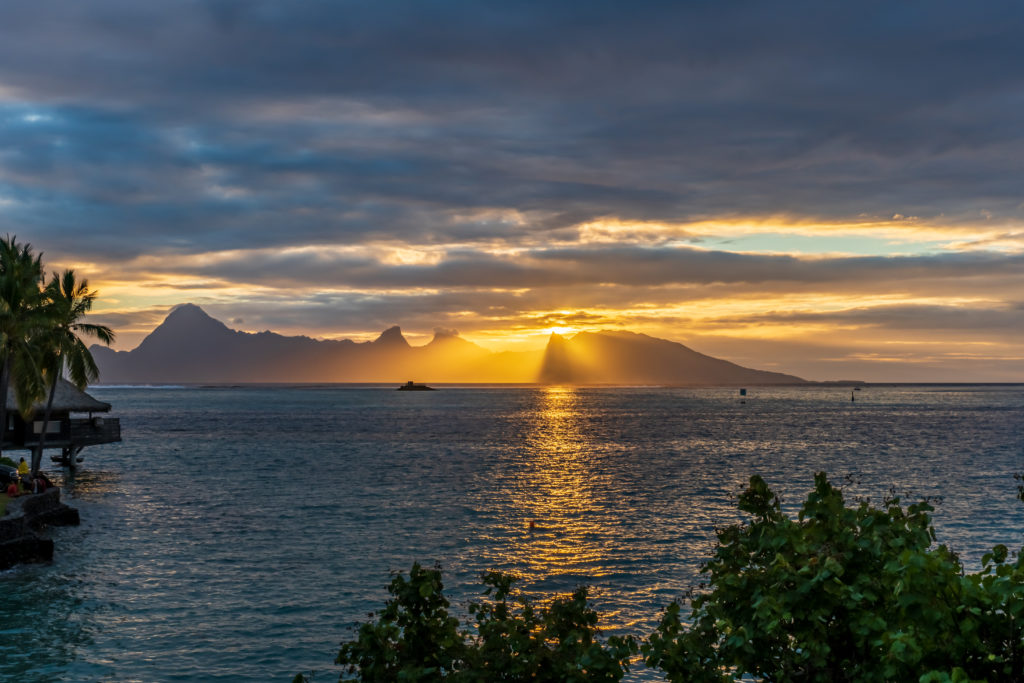
On our last day, we decided to circumnavigate the island. Our flight left late at night, so we had a full day to do so. There’s a single road that runs along the full length of the coast on the main island, Tahiti Nui, and then to the attached peninsula Tahiti Iti. It takes just two hours with continuous driving. The first stop was Grottes de Maraa – caves in the forest formed by freshwater runoff. There are three grottos that are connected by a gravel path. The last was the prettiest, but overall it was underwhelming. Just a few miles further, we stopped at Taharuu Beach, a black sand beach popular with surfers. We enjoyed watching younger kids shred waves that were more than twice their size. Next up was the Jardin Vaipehi Botanic Gardens, the starting point for several hiking trails into the mountains. Having missed out on hiking in Moorea, we were eager to venture into the rainforest. The hike starts and ends with a steep scramble through thick vegetation. After that, it steadily inclines and then flattens through the forested interior which afforded a handful of clearings that allowed us to fly the drone and gain a different perspective of the island. The high vantage point provided great views of the lush vegetation and the reef surrounding the island.

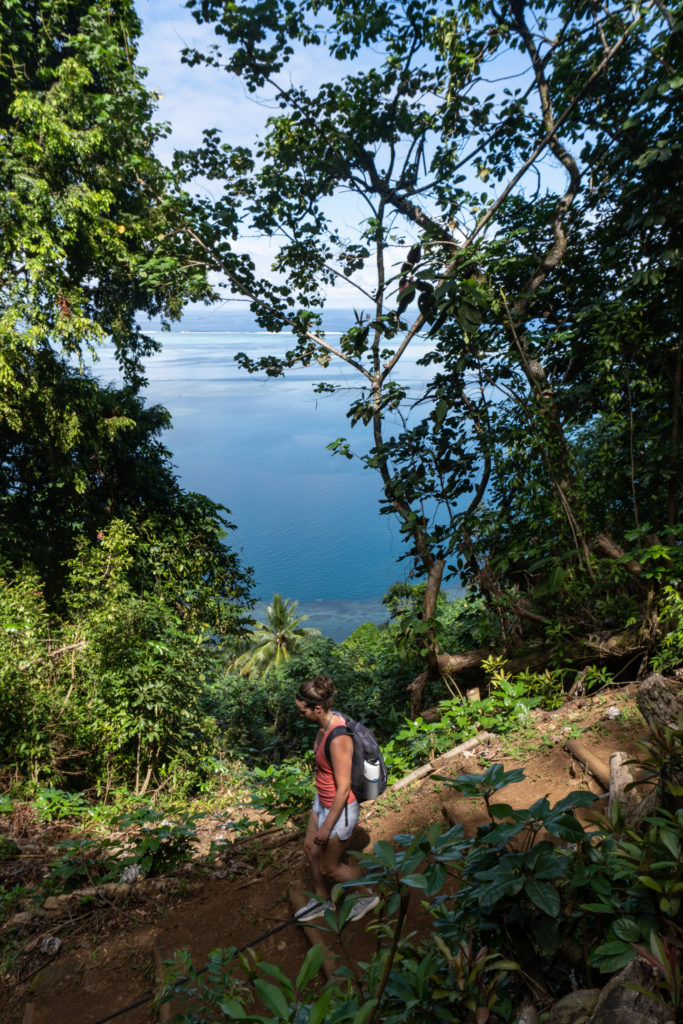

We stopped for lunch at Le Manoa restaurant in Taravo, located where the two islands of Tahiti meet. Brittany enjoyed Poisson Cru, the national dish consisting of raw fish marinated in citrus juice and coconut milk and served with rice. We continued south following the western road on Tahiti Iti to its terminus at Teahupoo. This world-famous surf spot is known for huge waves that are formed off the coral reefs. The waves are quite a distance offshore and require a boat or jet ski tow, so we could only see the surfers from a distance. This spot will host the surfing event for the 2024 Paris Olympics.
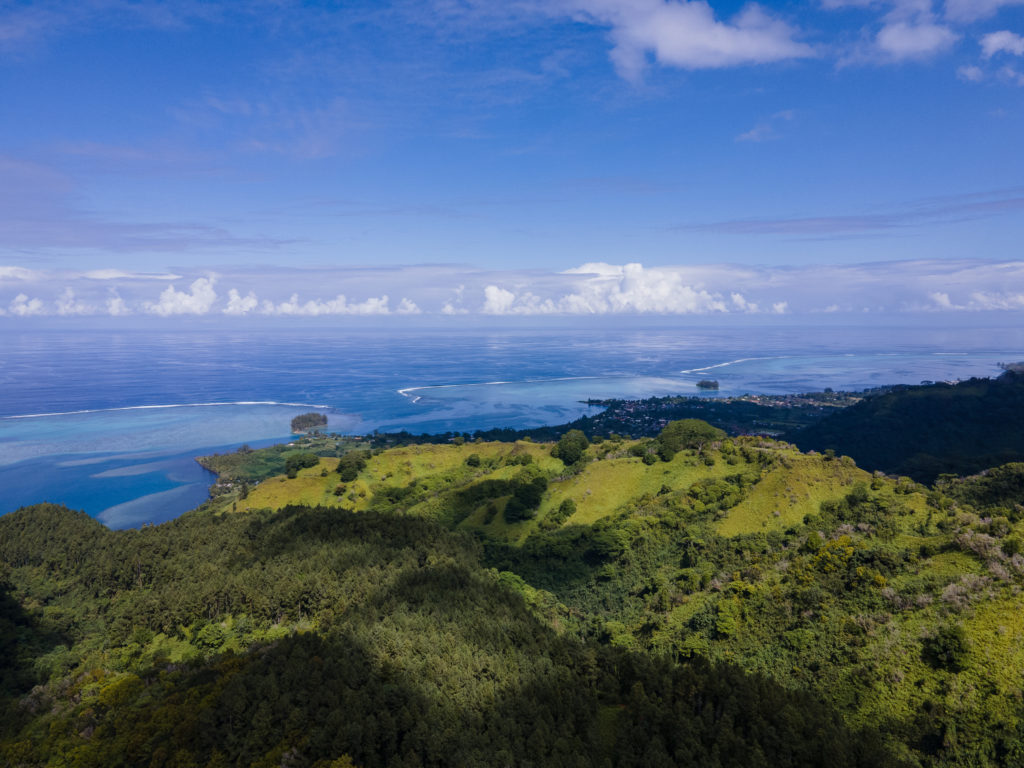

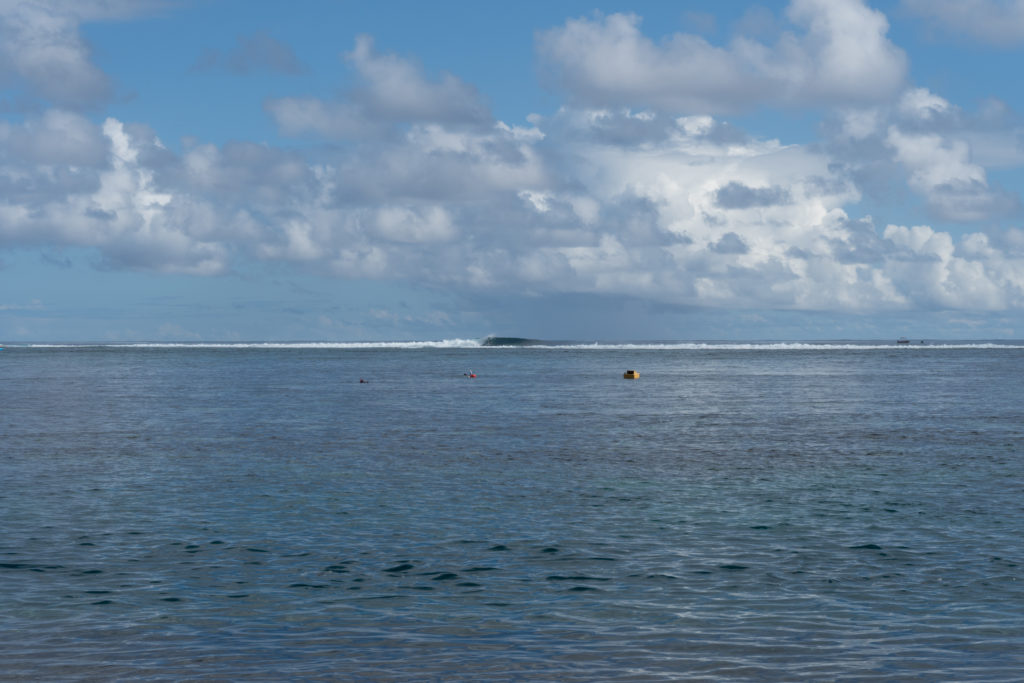
After cruising along the eastern coast of Tahiti Nui, we made our last stop at the blowhole, Le Trou du Souffleur. It’s an underwater lavatube that causes a geyser to shoot up with the incoming waves. By this point, we were starting to run short on time to shower, return the car and make it to the airport, so we bypassed our last planned stop at the Venus beach. Overall, the road trip was a great way to see the island, especially the mountainous interior and the famous surf spots.
The trip was a welcome first intercontinental escape since the start of Covid. Staying in fancy resorts is not quite how we normally travel, but it made sense to book this way for flexibility during changing Covid regulations. We thought the service overall was good but not great, and the food we experienced was OK; we enjoyed French staples like baguette and quiche but would have liked to venture outside the resorts more frequently.
Travelling always puts things in a new light and this trip was no different. We enjoy reflecting and appreciate being lucky enough to experience so much.
- Diving Tiputa Pass six times, we experienced dramatic contrast between large, crashing waves with jumping dolphins during outgoing current, and a calm, lagoon-like surface that allowed even snorkelers to drift through at slack tide.
- Looking down at the shallow water in the Sofitel lagoon from our bungalow, we noticed the small ripples on the surface of the water distorting the light. Changing our frame of reference made it appear like oscillations were the bottom moving and shaking, and not the surface.
- We got to experience a cool sunset from the boat on the north side of Moorea, with the sun descending over the vast Pacific Ocean and lighting the sky orange. Four nights later, from the island of Tahiti, we saw the sun descending behind Moorea, this time with sunrays jutting between the mountains and valleys for a different kind of light show.
What’s something that you’ve reflected on and looked at differently this year?
